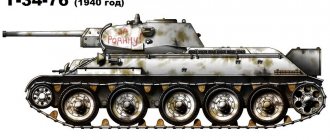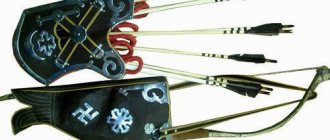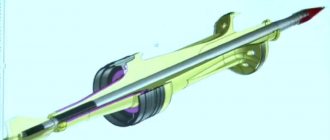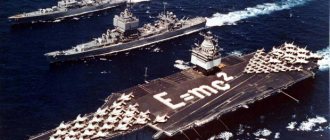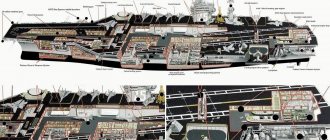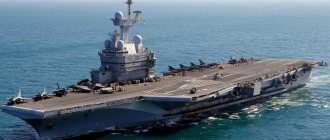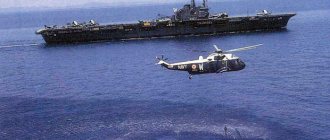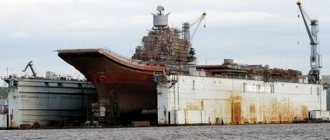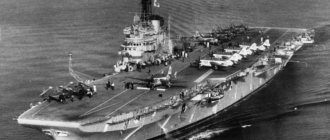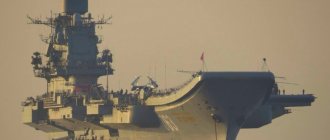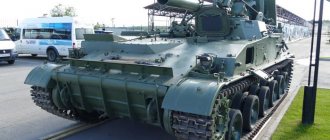The Pentagon explained these problems by saying that the idea was too ahead of its time. “In hindsight, it was clear that it was premature to equip (the aircraft carrier) with so many unproven technologies,” admitted US Under Secretary of Defense for Acquisition, Technology and Logistics Frank Kendall in the summer of 2016. During the tests, it turned out that the aircraft carrier has problems with the departure and landing of military aircraft, loading ammunition on board, airspace control and self-defense. It took a year to fix the problems.
The main feature of the Gerald R. Ford, which the US military has been struggling with for so long, is the EMALS electromagnetic catapult, which allows aircraft to be launched every 45 seconds, which is 25% more often than with a standard steam catapult. Its tests were successfully completed in 2015, but then questions arose regarding the new braking system, which ensures a soft landing of the aircraft. It had to be redesigned, which again delayed the delivery date of the aircraft carrier.
Aircraft carrier CVN-78 Gerald Ford. USA
Currently, the construction of the nuclear-powered aircraft carrier CVN-78 Gerald Ford is in full swing in the United States. The ship is being built according to the CVNX-1 project, which provides for the creation of a qualitatively new ship in a slightly modified AB hull of the Chester Nimitz type. It must be said that there is not much information on the Internet; in essence, this is all that we managed to dig up. Please love and favor, symbol of American naval power, nuclear-powered aircraft carrier CVN-78 “Gerald R. Ford”:
Gerald R. Ford (1913 - 2006; 38th President of the United States 1974-1977)
The design of aircraft carriers of the new type “CVX” began in 1996.
At the initial stage of work on the aircraft carrier project, by order of the Secretary of the Navy, an advisory commission was formed, which, collaborating with naval and industry experts, in particular, on the problems of promising technologies designed to increase the operational flexibility of the new aircraft carrier, developed the following recommendations. The ship must have a displacement of at least 100 thousand tons and a large flight deck to base a full air wing on it and support the flights of advanced aircraft, helicopters and unmanned aerial vehicles (UAVs) in almost any weather conditions. It was considered expedient to equip the aircraft carrier with a nuclear power plant (NPP), allowing it to carry out an emergency transition to the destination area at high speed without refueling (in this regard, the project received the designation CVNX). A unified electrical power system must ensure not only the operation of auxiliary mechanisms, but also the use of promising weapons systems. In the interests of increasing the survivability of the ship, the commission recommended taking measures to reduce acoustic and electromagnetic signatures, and in order to save money, reducing the crew size, construction costs and operating costs, and eliminating the need to recharge nuclear reactors.
The initial appearance even had overly “stealth” outlines.
However, this option was also considered:
However, having accepted these recommendations, the Navy command at the same time abandoned the initial version of the project due to its high cost (they meant the development of a completely new architectural and structural type of ship) and preferred an evolutionary transition to the design of a new hull after completing additional research and introduction of the latest technologies into shipbuilding practice. This, according to the developers, will take about 20 years, during which three ships with the hull of a Nimitz-class aircraft carrier will be built. Along with the goal of creating an aircraft carrier with significantly superior combat capabilities to existing ships of this class, the designers were tasked with reducing the cost of the ship's life cycle by 20 percent. Since over a 50-year service life it could amount to 21-22 billion dollars, the Navy command intends to seek measures that will not only allow, under financial constraints, to maintain the intended number of aircraft carriers in the fleet, but also use the saved funds for the creation and development of other types of weapons and military equipment. Since up to 40 percent. (about 9 billion dollars) of the above amount is for the maintenance of personnel; a significant reduction in the size of the aircraft carrier’s crew is envisaged - from 3.5 to 2.5 thousand people. This requirement will be partially implemented during the construction of CVN-77, which will become intermediate between the existing Nimitz-class AVMA and ships of the new project in design, characteristics and technical solutions.
The threat to aircraft carriers may come from guided missiles, cumulative munitions, advanced torpedoes, napalm-carrying aircraft or cruise missiles with both conventional and, possibly, chemical-biological warheads. In this regard, along with improving structural protection and self-defense means, the project developers are striving to reduce the radar and optoelectronic signature of promising aircraft carriers. On modern ships of this class, the superstructure alone, rising 30 m above the upper deck, has an effective scattering surface (RCS) equivalent to the ESR of an Orly Burke-class guided missile destroyer. Research on the CVNX project confirmed the feasibility of replacing a large superstructure with two small ones, using conformal antennas, rounded coupling of the sides with the flight deck, special coatings and other measures related to the use of stealth technology, as well as placing all or part of the aircraft lifts not on the sides, but in the center plane of the ship . This is not about making the new aircraft carrier invisible; the developers’ task is to reduce the ESR so much that the radar image of the AVMA does not differ from other ships of the marching or combat order.
AVMA CVN-78 (with the hull of a Nimitz-class aircraft carrier) will be equipped with a new nuclear power plant and electrical power system, which will ensure that the ship is equipped with electromagnetic catapults and high-precision self-defense weapons, power supply for new radars and the conversion of auxiliary steam systems to electricity. These and other innovations will be further developed in the design of the AVMA CVN-79, which will have a hull of a new (possibly catamaran) design, which will increase the flight deck area, and a promising electric propulsion system.
For promising aircraft carriers, the operational period will be approximately 50 years. Taking into account past experience, during this period the ship, as project developers predict, will be able to take part in three major regional conflicts and at least 20 smaller ones, provide 500 thousand aircraft takeoffs and landings, spend 6,000 days at sea and travel about 3 million miles. Taking into account the rotation of crew members, up to 100 thousand people will serve on board during this time.
Performance characteristics of the nuclear-powered aircraft carrier "Gerald Ford":
Total displacement: approximately 100 thousand “long tons” (101.6 thousand metric tons.)
Dimensions: Length 317 meters, width 40.8 meters (maximum).
Main power plant: nuclear power plant, 2 improved pressurized water reactors with extended service life.
4 GTZA (main turbo gear units), 4 propellers.
Full travel speed approx. 30 knots
Crew (sailors, air group, support personnel): 4660 people.
Air wing: 75 aircraft for various purposes.
Anti-aircraft missile system:
"Advanced Sea Sparrow" or RIM-116 (RAM-116).
Aviation equipment: electromagnetic catapults EMALS (development entrusted to General Atomics)
Electronic weapons include ACDS Bloc 1 (or its improved version), multifunctional automatic control system "Aejis" Mk 7 (or improved version), radar with phased array automatic control system "Aejis" Mk 7 PY-1E or PY-1F+VSR, radar systems air wing support, satellite communication systems, navigation systems, etc., etc.
Regarding the composition of the air wing:
The strike component will be represented by the F/A-18E/F Super Hornet and F-35C fighters.
In the future, strike capabilities may increase due to the introduction of UAVs into the air group, for example, according to the US Navy TTZ, Northrop Grumman is working on the X-47A project.
Apparently, it is also planned to use F/A-18E/F Super Hornet fighters as air defense fighters; at least the specialized F-14 interceptors have been decommissioned, and no new ones are being designed (at the end of the 90s there was information about the development of a ship version F-22, but, apparently, the topic has died down).
Perhaps the air defense of the AUG will be assigned to the EVs with the Aegis ASBU, equipped with the Standard SM-3 air defense system.
Thus, there is a predominance of the strike capabilities of the air wing over air defense.
Electronic warfare aircraft: apparently, the EA-18G Growler version of the Hornet will act in this capacity (which is quite good from the point of view of unifying the composition of the air group).
DLRO/control aircraft will be represented by the E-2D Advanced Hawkeye (in appearance it is no different from conventional Hawkeyes, but has significantly expanded capabilities; in particular, unlike previous versions, the new Advanced Hawkeye aircraft will be able to coordinate air strikes on air , ground and sea surface targets.).
The V-22 Osprey in the SV-22 variant (instead of the Viking) will most likely be used as an anti-submarine aircraft, plus a multi-purpose version of the HV-22 tiltrotor, in the form of an landing and search and rescue vehicle.
However, this does not negate the presence of helicopters on board, which most likely will remain various variants of the Sea Hawks.
Some milestones in the construction of CVN-78:
The first section of the keel was laid on November 14, 2009. The laying was attended by Susan Ford Boyles, daughter of Gerald R. Ford, who acted as the patroness of the ship named after her father (it must be said that there was controversy over the name of the ship for some time, in particular by veterans The Navy insisted on naming the new aircraft carrier the name "America", in honor of the decommissioned Kitty Hawk class ship). Her initials were electric welded onto a steel sheet that was inserted into the first section of the keel.
And here, in fact, is the first section of the keel in the shipbuilding dock.
So, if we draw some preliminary conclusions about the features of the CVN-78, then the following appears:
1. Among the new products, strictly speaking, there is the use of an electric catapult (reactors with an extended service life were first introduced on the Virginia-class nuclear submarine, the Aejis automated control system with phased array was first introduced on the previous CVN-77 George HW Bush). On the one hand, this allows you to save considerable weight (electric catapults are approximately 2 times lighter than steam catapults, and the weight of steam catapults is approximately 20% of the standard displacement of the Nimitz-type AVMA), launch heavier vehicles; again, there is no water (steam) consumption, no hydraulic wear. On the other hand, the equipment of e/m catapults is more sensitive to aggressive factors of the marine environment; the operation of some components can create unwanted vibrations of the deck; An electromagnetic pulse during catapult operation can interfere with the ship's radio-electronic equipment.
2. On the other hand, there is criticism of the CVNX program for being too expensive, while opponents point out that to solve the strike missions of the fleet, it is enough to use a ship-based missile system, and the tasks of air support for the Marine Corps can be taken over by the F-35B of the Marine Corps.
Construction of the Gerald R. Ford AB is expected to be completed in 2015.
“The US aircraft carrier will go to the shores of Crimea, Turkey has given the go-ahead for passage through the Bosphorus”
The 19fortyfive portal, close to the Pentagon, published an interesting article by Stavros Atlamazoglu , a military expert for the publication. The material is called “Russia won’t like this: The US Navy has an aircraft carrier near Ukraine.” He writes: “The Harry S. Truman carrier strike group is currently in the Mediterranean and could be within range of Ukraine within a short period of time.” In addition to the lead ship, the AUG includes the missile cruiser San Jacinto, the destroyers USS Bainbridge, USS Cole, USS Gravely, USS Jason Dunham, as well as the Norwegian frigate Fridtjof.
Despite the fact that Biden said that Washington will not provide direct military support to Kiev, the Essex landing group, which is now located in the Arabian Sea and the Persian Gulf, has also been put on full combat readiness. It is based on the Wasp-class helicopter carrier of the same name, as well as the landing dock ships Portland and Pearl Harbor. They house approximately three thousand elite Stars and Stripes Marines.
